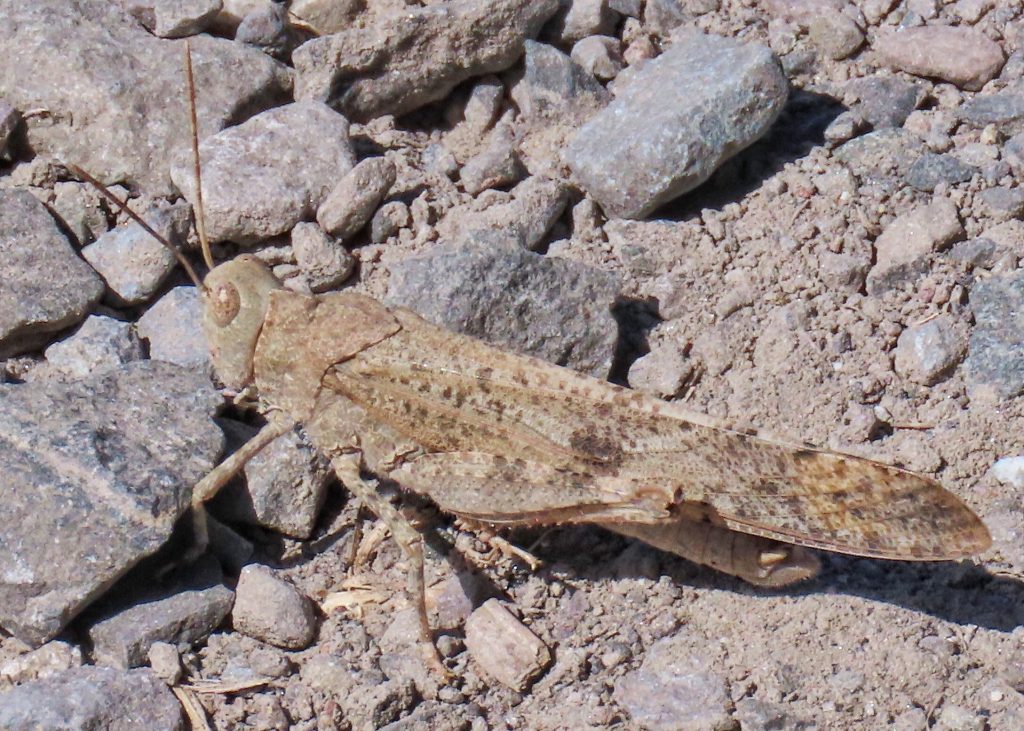
This is a rarity for me, an easy to identify grasshopper, due to the fact that it is the only grasshopper in our region whose hindwings, which are only visible during flight, are black with a cream border, reminiscent of a Morning Cloak butterfly. This resemblance is heightened by the grasshopper’s tendency towards extended, zig zag flights, and the male’s courtship displays, which consist of hovering while clicking its wings. Unfortunately I was not able to get a decent photo of the of the distinctive and obvious hindwings. Besides that showy characteristic they are notable for not being showy in their maculation. When I see a large (32-58mm) sand colored and lightly spotted grasshopper my first thought is “Carolina Grasshopper” which I attempt to confirm by spooking them into flight.
Besides being preyed upon by birds, small mammals, and occasionally fish when an errant flight deposits them in the water, Carolina Grasshoppers are frequent larval hosts to Sphecid Wasps (Thread-waisted Wasps) in the genus Prionyx. As noted in this post by Eric R Eaton, the wasp paralyzes its prey, then digs a burrow, inserts the victim, and lays an egg on it before sealing the burrow.
Carolina Grasshoppers seem to prefer eating grasses, but they are polyphagous and will also feed on a variety of forbs. In the PNW adults are active from June to September. It is often seen on roads, paths, sidewalks, beaches, and other open areas. It is found region wide.
https://bugguide.net/node/view/14827
https://mynpn.usanpn.org/npnapps/species/Dissosteira/carolina
http://www.uwyo.edu/entomology/grasshoppers/field-guide/dica.html
Size- 32-58mm
Habitat- Open, grassy and weedy areas
Range- Region wide
Eats- Prefers grasses, but will eat forbs
Flight Season- Adults active June to September